![]()
Notes on some of those mentioned in the Faversham pedigree and the associated Lindley, Dines, Brooks, Kingsnorth, Knowles and Clare, Rosbotham and Swift families. For Finch (mediæval period) see here.
Only child of John Alefounder and his wife Mary, as is clear from administrations of their effects granted to Daniel in 1804.
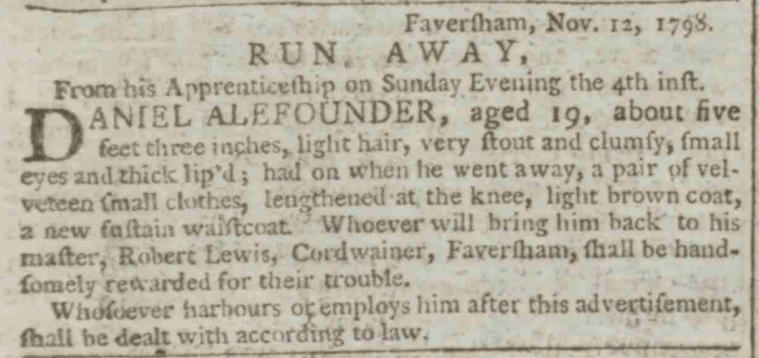
In 1795, for a fee of £10, he was apprenticed to Robert Lewis, cordwainer of Faversham, to serve 7 years. A cordwainer was a shoemaker, working with a type of high quality leather from Cordova, Spain. It appears that he became unhappy with this situation. An advertisement (left) appeared in the Kentish Gazette, 13 November 1798, saying that he had run away. Exactly what happened after that is not yet clear. He eventually became a schoolmaster, but before that he was sometimes a shoemaker. In the register recording the baptisms of his children, his occupation is recorded as schoolmaster in 1814 and 1817. shoemaker in 1820 and 1822, then schoolmaster again in 1827. At the time of his death in 1829, he was a schoolmaster, as can be seen from the notice which appeared in the Kentish Gazette on 1 May 1829:
DIED- April 26, at Faversham, Mr. D. Alefounder, schoolmaster, aged 49, leaving a wife and eight children.Knowledge of his profession also comes from the 1861 census where Sarah Alefounder is recorded as a "Schoolmaster's Widow" and from her death certificate which describes her as "Widow of Daniel Alefounder Schoolmaster". There is also a record of the marriage of his daughter in the Kentish Gazette for 1868 Dec 29:
Johnson—Alefounder.—On Christmas Day, at St Margaret's Church, Canterbury, by the Rev. C. A. Fowler, William Johnson, to Sarah, second daughter of the late Daniel Alefounder, schoolmaster, Faversham.
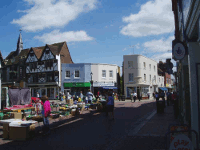
Market Square, Faversham, looking towards Market Street. Larger version of picture.
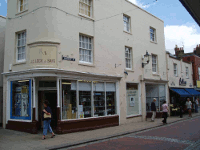
Market Street, Faversham. The shop front for number 2 is just to the right of the street lamp. Larger version of picture.

West Street, Faversham. Number 4 is now combined with
number 5. William Alefounder, below.
Larger version of picture.
Pictures taken June 2005.
Son of Daniel (above) and his wife Sarah.
At the time of the 1841 census, he was working as a male servant and living at 13 Drayson Square, Faversham, Kent, but by 1851 was a Chemist and Druggist of 2 Market Street, Faversham where he lived for the rest of his life. In his will he gave his son John (below) the option of taking his business with the provision that his other children were to have equal shares (plus interest) after three years. A trade card is held at the Science & Society Picture Library.
Maidstone Telegraph 1860 Jan 28:
FAVERSHAM Francis Edwards, aged 9 years, was examined before the mayor and C. Bryant, Esq., on Wednesday, charged with stealing a half-pound weight from the shop of Mr. Alefounder, of Market-street, druggist. The defendant offered it for sale to Mr. Delo, of West-street, who very properly detained it, and on enquiry being made, it was found to have been stolen from Mr. Alefounder.—Committed for three days and to be once whipped.
It was most likely this John Alefounder, rather than his son, who stood (unsuccessfully) for election to the Town Council in 1860. Kentish Chronicle 1860 Jan 28:
The name "Misery Pain" in the above appears not to be genuine.FAVERSHAM Election of Town Councillors.—A meeting of the Council was held on Friday, for the purpose of electing three Councillors in the room of the Mayor and Messrs. Spong and Watson, whose seats had become vacant in consequence of their having been made Aldermen. There were six candidates appointed—namely, Misery Pain, John Alefounder, John Rolf, Edward Hogben, Edward Thomas Golter, and Henry Kirby, all of whom entertain liberal views, so that it mattered not, politically speaking, or in any other manner that we are aware of, on whom the choice of election fell. The three last-named person, however proved the fortunate ones, and they were about 11.30 a.m. declared to be duly elected.
Kentish Gazette 1864 Mar 8:
FAVERSHAM– ... Borough Petty Sessions.–Wednesday.–(Before the Mayor, W. P. Hoare, Esq., W. N. Spong, Esq., and C. Bryant, Esq.)–... Sarah Reed, an old woman, was charged with stealing two glass bottles and their contents, colomel and jalap, the value of £1 4s, from the shop of Mr. Alefounder, druggist, Market-street, Faversham, in the evening of the 1st February. She pleaded guilty, and was sentenced to two months' hard labour in the house of correction at Maidstone.
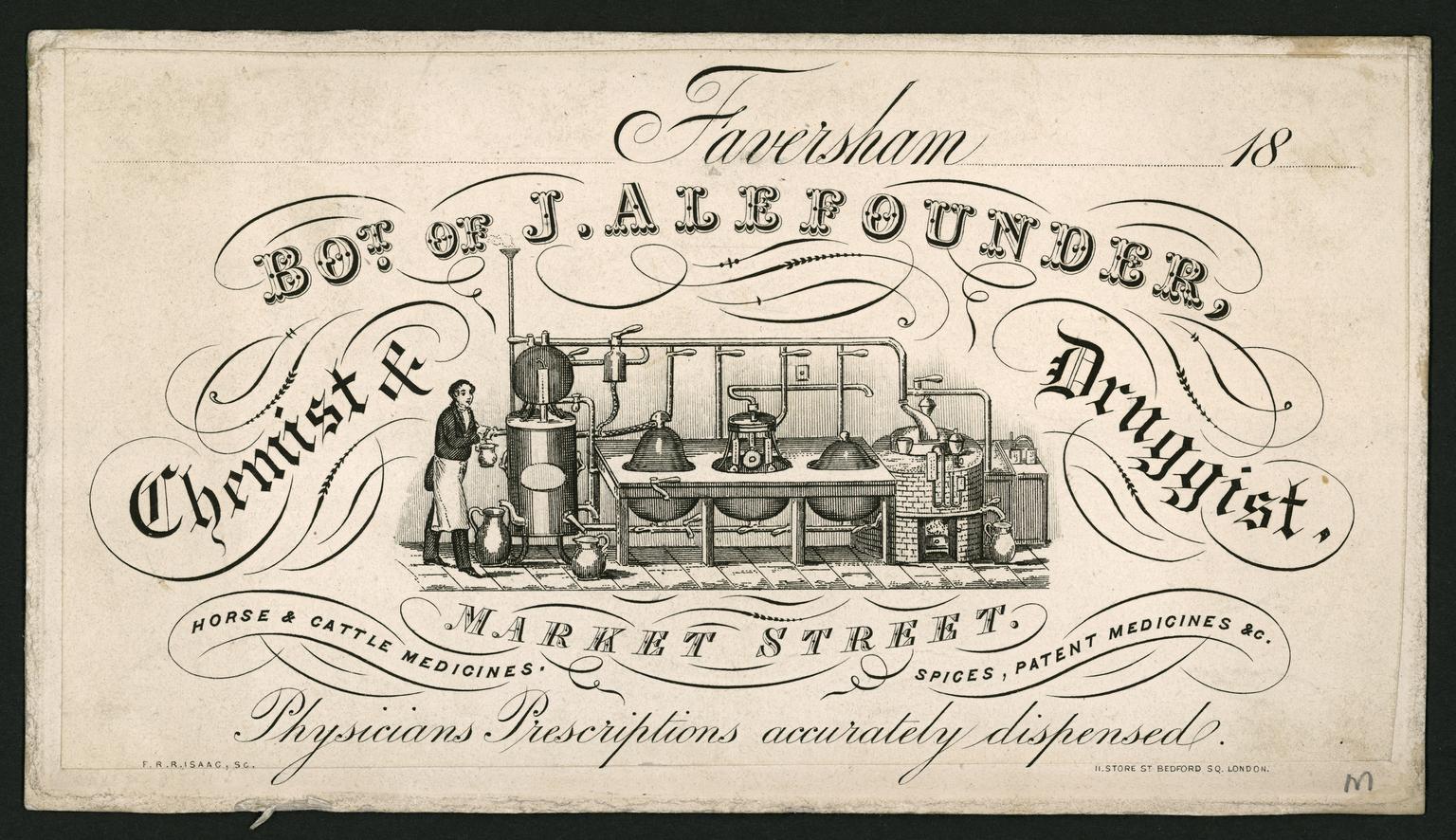
On his father's death, took over the business of Chemist and Druggist, as is apparent from the entry in the Register of Chemists and Druggists for 1869: the date of registration is 31 December 1868, after his father's decease on 18 October that year. He must have been active in the profession before then however, as only those in business prior to 1 August 1868 were allowed to continue under the description of Chemist and Druggist; new entrants had to be qualified and were then known as Pharmaceutical Chemists. He is not listed in the Registers for 1870-1886, but appears again 1887-1889. He died in 1890 and by the time of the 1891 census the premises had left the family: nos 1 & 2 Market Street had been combined into one shop and were occupied by a tinsmith's shaperman.
Whitstable Times and Herne Bay Herald 1890 May 31:
FAVERSHAM Interesting Discovery.—In looking over the late Mr. John Alefounder's books and papers this week, Mr. Jabez Smith, the administrator to the estate, discovered two autograph letters by John Wesley, to a Mr. Andrews, dated respectively 1776 and 1784, expressing his opinions respecting Calvanistic doctrines. He also found a military order signed by the first Lord Harris, and another military document relating to the Light Infantry Company of Faversham Volunteers, which were formed "For the Defence of the Realm during the present war," dated 1800. Mr Smith is negotiating for the sale of these documents.
Basket maker; living on West Street at the time of the 1851 and 1861 censuses, more specifically, 4 West Street according to a trade directory of 1862. He married Charlotte Hope in 1861. Kentish Gazette, 18 June:
MARRIAGES. Alefounder–Hope–June 12, at Faversham church, Mr. William Alefounder to Miss Charlotte Hope, both of Faversham.
The freehold of 4 West Street was sold in 1865. South Eastern Gazette, 22 Aug:
This was being sold as an investment, so they might not have had to move at the end of that tenancy year. However, they did move eventually. William appears in the 1871 and 1881 census returns living at 51 Tanner Street, Faversham. Charlotte was not there in 1871: she was visiting her sister Frances Wheeler in St Martins Hill, Canterbury. The presence there of an "Infant" Wheeler, a 3-day-old girl, no doubt provides the reason for the visit. Frances Hope married George Wheeler in 1865. George was not at home at the time of the 1871 census, probably because he was in prison (Frances is listed as a "Prison Warders Wife").FREEHOLD HOUSES AT FAVERSHAM, AND FREEHOLD COTTAGE PROPERTY, BEGS to announce that he is instructed to SELL by PUBLIC AUCTION, on Wednesday, 6th of September, 1865, at Three o'clock in the afternoon to a minute, at the Ship Hotel, Faversham, the following FREEHOLD PROPERTY:—
IN THE PARISHES OF GOODNESTONE AND GRAVENEY.
Mr. H. MINTER
Lot 1.—Comprises all that MESSUAGE or DWELLING-HOUSE, being No. 4, in West-street, in the town of Faversham, having 2 parlours, 4 bed-rooms, 1 attic, cellar, kitchen, and washhouse with lofts over, large and productive garden, together with all that MESSUAGE or DWELLING-HOUSE adjoining, being No. 5, in the same street, having a front shop, parlour, 2 chambers, detached washhouse and small yard, with the appurtenances thereto belonging. There is a well with pumps, also a rain-water tank on the premises.
The above property is in the several occupations of Messrs. Alefounder and Hills, as yearly tenants, at rents amounting to £41 12s. per annum (landlord paying rates and taxes), and is situate in the best part of West-street for business.
...
It was common practice for domestic servants to find work at annual hiring fairs. They were contracted to work for one year, after which the contract might be renewed. However, servants knew their value and would frequently move from one employer to another in search of better pay and conditions. Census returns in such cases can only provide a very partial employment record:
Susan Alefounder "of Clapham, Formerly a Domestic Servant" died on 11 March 1894 in the Union Infirmary, West Battersea, London.
Domestic servant; as for her sister above, a partial life history is provided by census returns and other records:
A witness to the marriage of William Alefounder and Charlotte Hope in 1861. She appears in census returns as follows:
She suffered a fire on 13th January 1889. Whitstable Times and Herne Bay Herald 1889 Jan 19:
Fire.—On Sunday evening about half-past five o'clock, a tenement in Blue Coat Square, Stour Street, Canterbury, occupied by an old woman named Alefounder, was discovered to be on fire. One of the neighbour's daughters, named Fuller, was leaving her father's house, which is one of the row, when she observed smoke issuing from the windows of the upper storey of Mrs. Alefounder's cottage. Miss Fuller at once ran to the house and apprised Mrs. Alefounder of the state of affairs, and she went upstairs and found flames issuing from the side of the room farthest from the window. The room was full of smoke. By this time assistance had been obtained by the neighbours, and when the Kent Fire Brigade, under Superintendent King, arrived, several pailfuls of water had been thrown on the flames. By hard work the fire was speedily extinguished. The upper room (which had been used as a bed-room) and its contents were very much damaged by fire and water. The old woman had been to see a sick friend on Sunday, and it is conjectured that when she entered the lower room a spark from the fire ignited her ulster. This she hung up in her bedroom, and it is believed it burst into flames. The fire destroyed all the clothing the unfortunate woman possessed, except what she had on at the time.
She died in 1901 (registered 3rd quarter, in Canterbury), age 80.
Samuel's father John (1806-1868) left his business as Chemist & Druggist to his second son John, presumably because Samuel, the eldest, had already by then moved away. In 1856 Samuel married Emma Smith in West London, was still living in that area when his daughter Emma was born in 1857, but had moved to Liverpool by 1860, where his son Samuel was born. His move does not appear to have been the result of any family dispute - he shared equally with the other children in his father's estate and his brother Charles Wesley Alefounder was married in Liverpool in 1866, although still normally resident in Faversham. Samuel appears in census returns as a chemist's apprentice in 1851, a Druggist's assistant of 13 Sophia Street, West Derby, Liverpool in 1860 (son's birth certificate), a "Chemist &c" in 1861 (census returns, same address but listed under the name of Alexander), a Druggist's Assistant of 22 Fitzroy St in 1871 and a Chemist of 60 Landseer Road, Everton, Liverpool in the 1881 census.
Mary Ann Alefounder married Alfred Kingsnorth in 1860. He was a tailor, born in Ospringe, Kent, and appears in census returns as follows:
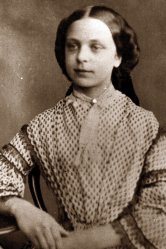 |
 |
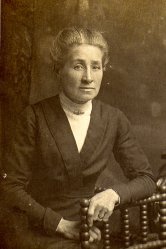 |
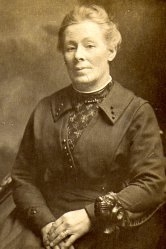 |
| Mary Ann Alefounder | William Kingsnorth and his wife Sarah née Richards, parents of Alfred Kingsnorth | Elizabeth Wilson | Susannah Nicholls |
| Daughters of Mary Ann and Alfred Kingsnorth | |||
| Photographs from Paul Willis. Click to enlarge. | |||
Seated at back, Rosina Florence Kingsnorth née Hill and Alfred Wise Kingsnorth; on the right, their son Horace Andrew Kingsnorth; standing behind him, his wife Ruth Alice née Bradford; at the front, Mary Ruth Kingsnorth, daughter of Horace and Mary.
Click on picture to enlarge.
Rosina Kingsnorth née Hill
Click on picture to enlarge.
See Kingsnorth pedigree.
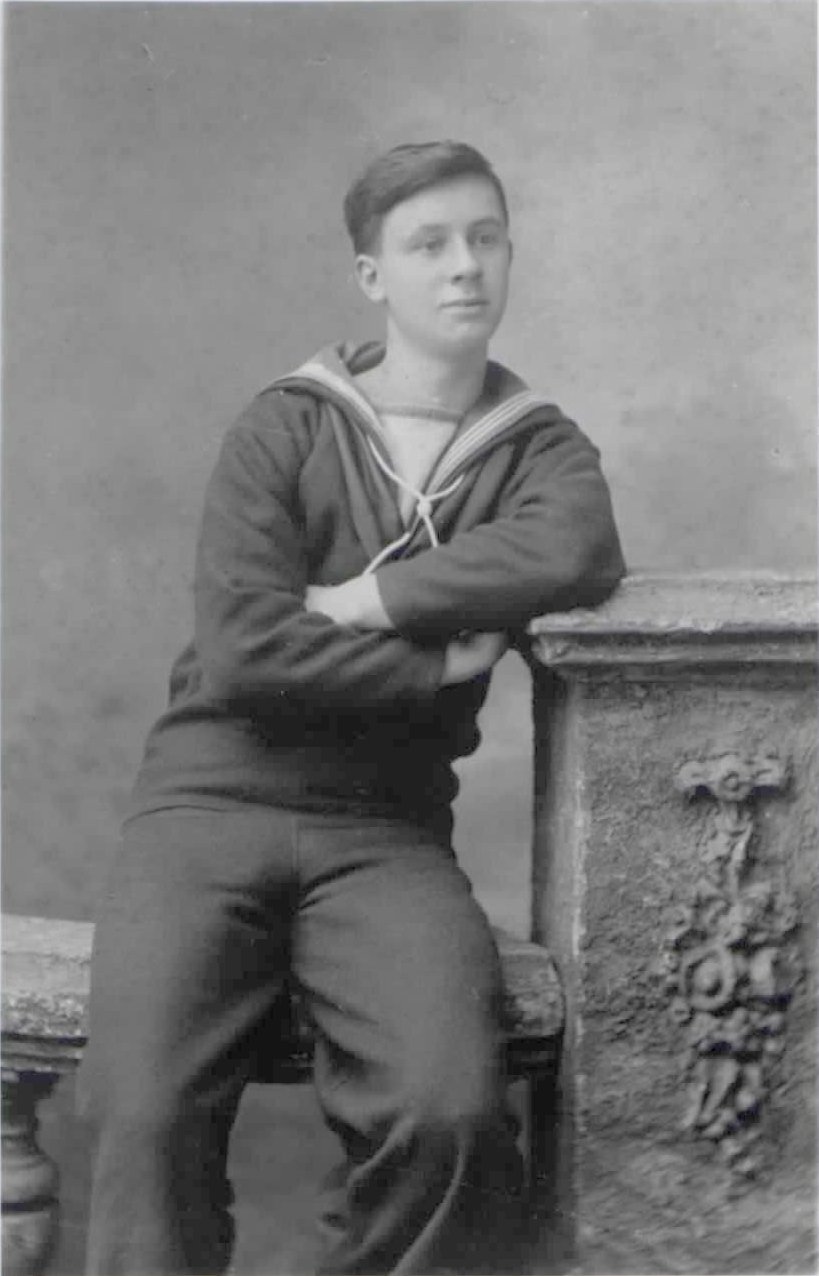 |
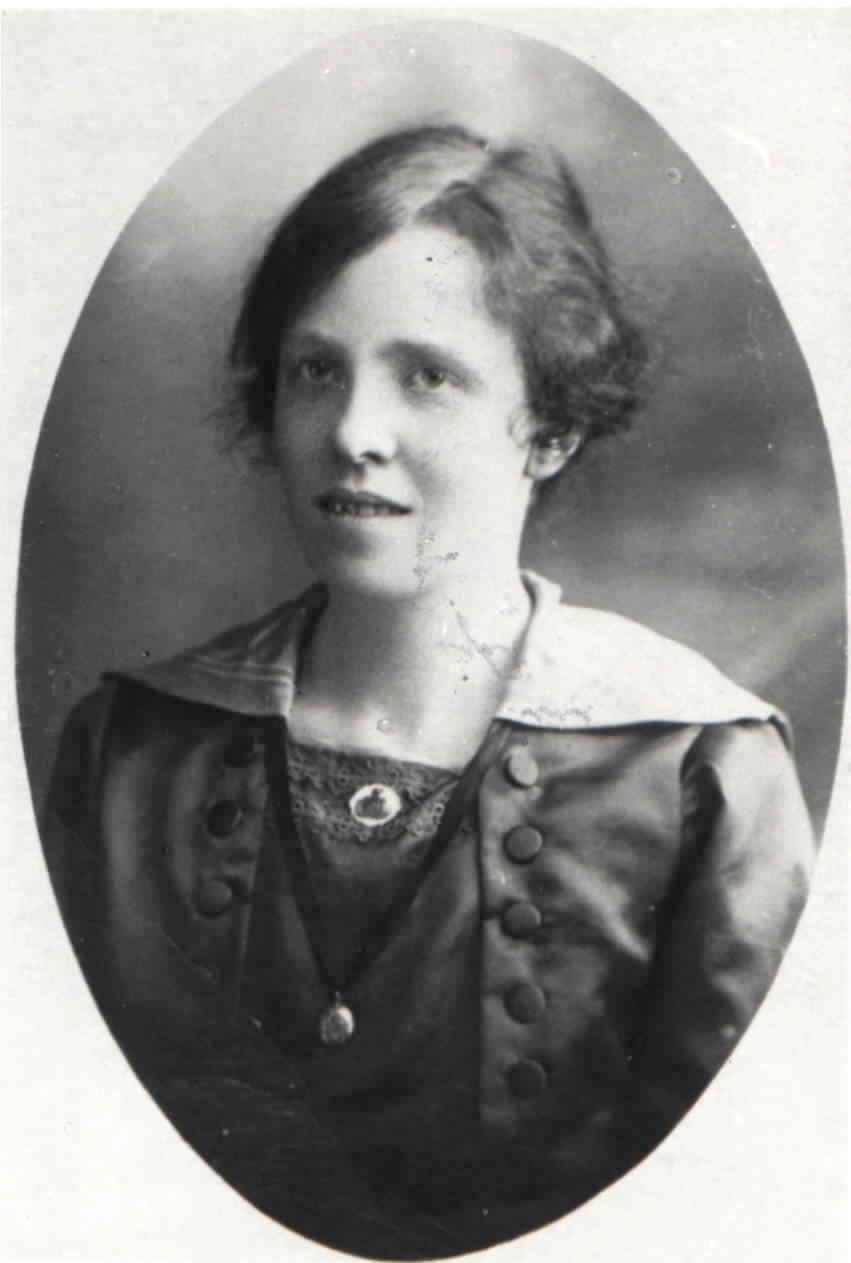 |
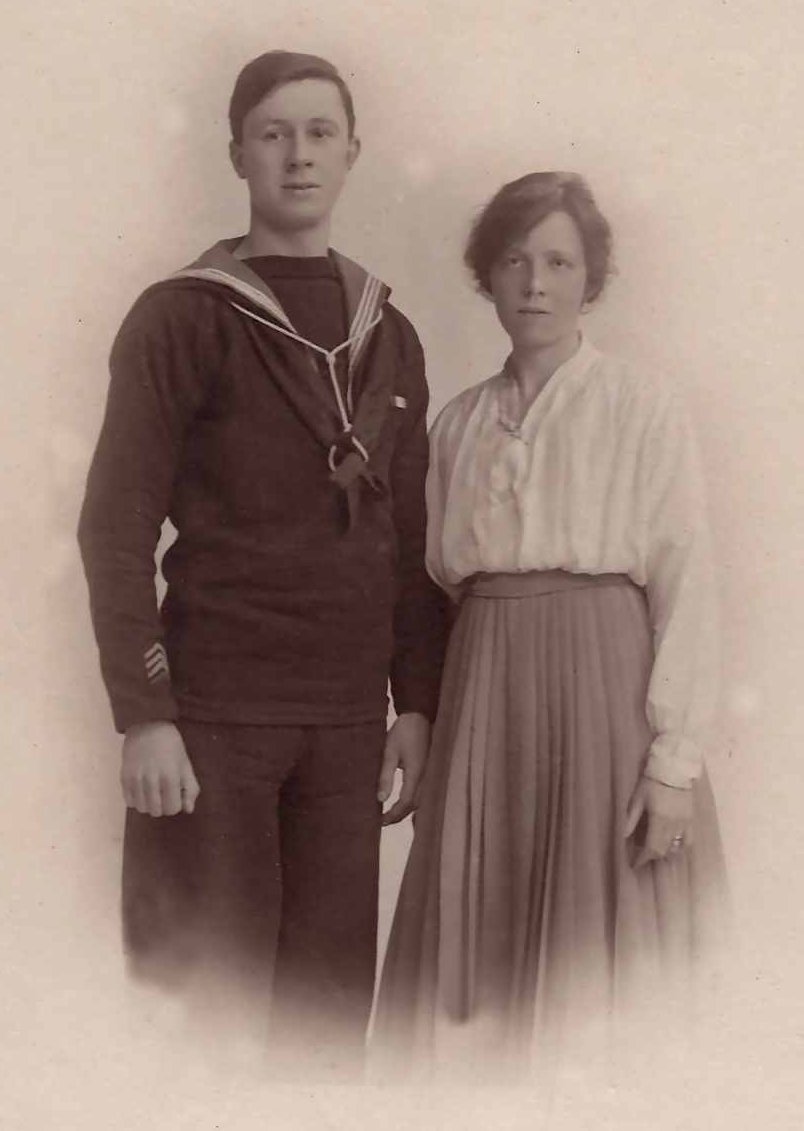
| ||

|
Ruth and Horace Kingsnorth with their daughter Mary.
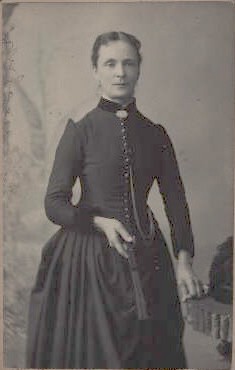
Vashti Wilmot, second wife of Alfred Kingsnorth.

Algernon Frank Wesley Kingsnorth and Cecil George Wilmot Kingsnorth, sons of Alfred Kingsnorth and Vashti née Wilmot.
Susannah Kingsnorth, daughter of Mary Ann and Alfred Kingsnorth, above, married William Nicholls in 1895.
Click on picture to enlarge.
1 unknown
2 Cecil George Wilmot Kingsnorth
3 Elizabeth Ann Nicholls (not on family tree)
4 John Gorman
5 Alfred Kingsnorth b 1837
6 Louisa May Norton
7 Thomas Wilson
8 Algernon Frank Wesley Kingsnorth
9 Ellen Gorman late Nicholls née Pyne
10 unknown
11 Bessie Lightfoot
12 William Nicholls b 1870
13 Susanna Kingsnorth
14 Elizabeth Jane Kingsnorth
15 William Thomas Kingsnorth
16 Thomas William Kingsnorth
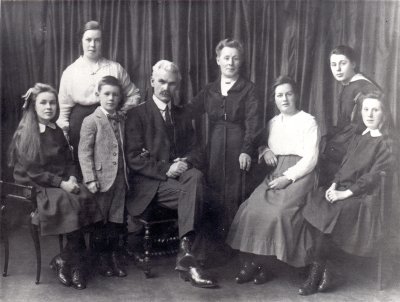
Larger version of picture (987KB)
Photograph from Paul Willis
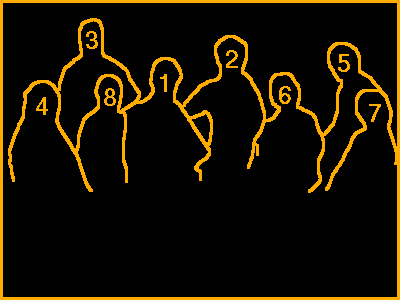
1 William Nicholls
2 his wife Susannah née Kingsnorth
Their children:
3 Elizabeth
4 Bertha
5 Dorothy Winifred
6 Kathleen
7 Alice
8 William
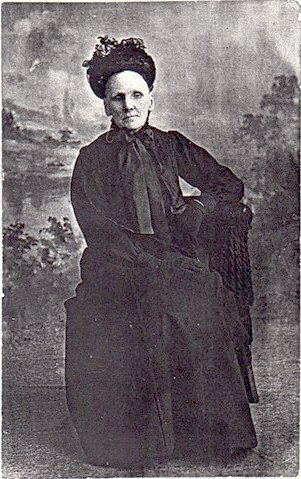
Ellen Nicholls née Pyne, mother of William Nicholls who married Susannah Kingsnorth. Ellen's second husband was John Gorman. Further details of her family can be found on the web site of Paul Willis.

Samuel and Amy Alefounder in 1933.
Larger version of picture (100KB)
Son of Samuel and his wife Emma; according to the census in that year, living in 1881 with his parents at 60 Landseer Road, Liverpool, as a cashier. They soon moved to 48 Grasmere Street, as is apparent from an advertisement in the Phonetic Journal for 1882: "Wanted, a Prayer Book in good condition, latest edition in Phonography. Send lowest price to S. Alefounder, junr., 48 Grasmere street, Liverpool." He was still living there as an engineer at the time of his marriage in 1890; his bride, Amy Brooks, was of 86 Kirkdale Road.
He is mentioned in an advertisement in the Birmingham Daily Post, 12 November 1886, under the heading "Secretary and Office" for the new company, J. P. Jackson & Co, Ltd., formed to acquire "the valuable Patents, Patent Rights, and the Business of Mr. J. P. Jackson, Engineer, &c., to the Wine, Spirit, and Aërated Water Trades carried on at Liverpool", 2000 shares of £5 each being offered for subscription.
In Kelly's Directory of Liverpool & Birkenhead for 1894 and 1895, he is listed as a mechanical engineer living on the south side of Sutton street, at number 83, his place of work being given in 1894 as Tildesley, Alefounder & Co. of 53 & 55 Cornwallis street, under the headings of Soda & Mineral Water Machinery Manufacturers and Bottling & Corking Machinery Manufacturers. In the London Gazette, 14 Jan 1896, there appeared a notice that the partnership between Henry Fletcher Tildesley and Samuel Alefounder, Engineers and Machinery Merchants, known as Tildesley, Alefounder and Co., had been dissolved on 31 Dec 1895, Henry Fletcher Tildesley continuing the business.
Gore's Directory of Liverpool & Birkenhead, 1900, lists Samuel Alefounder as an engineer of 6 Woodland Road, Walton; in the 1901 census, his address is given as number 7 Woodland Road, Walton on the Hill, occupation Commercial Traveller. It appears that by this time, he was working for Dawson Brothers, Ltd., Dairy Engineers – manufacturers of bottle washing machines etc. By 1910, he was one of the senior staff, as is clear from a photograph taken of the Dawson Brothers stand at the Horticultural Hall, London in that year. He appears alongside the Dawson Brothers directors in another photograph, taken at the Dairy Show, Olympia in 1948. He would have been long past the usual retirement age for an employee. This was a family firm and he could not have become a director himself.
Joined the Royal Field Artillery 23 May 1915. He was a a Gunner Corporal in C Battery, 276th Brigade at the time he was admitted to the RFA Officer Cadet School on 20 September 1918. Having completed his training there, he was promoted to Second Lieutenant on 8 April 1919 and then served in the Royal Artillery, Territorial Force. He resigned on 13 December 1920, suffering from the effects of a gassing on 2 April 1920. Can be seen in the family group photograph.
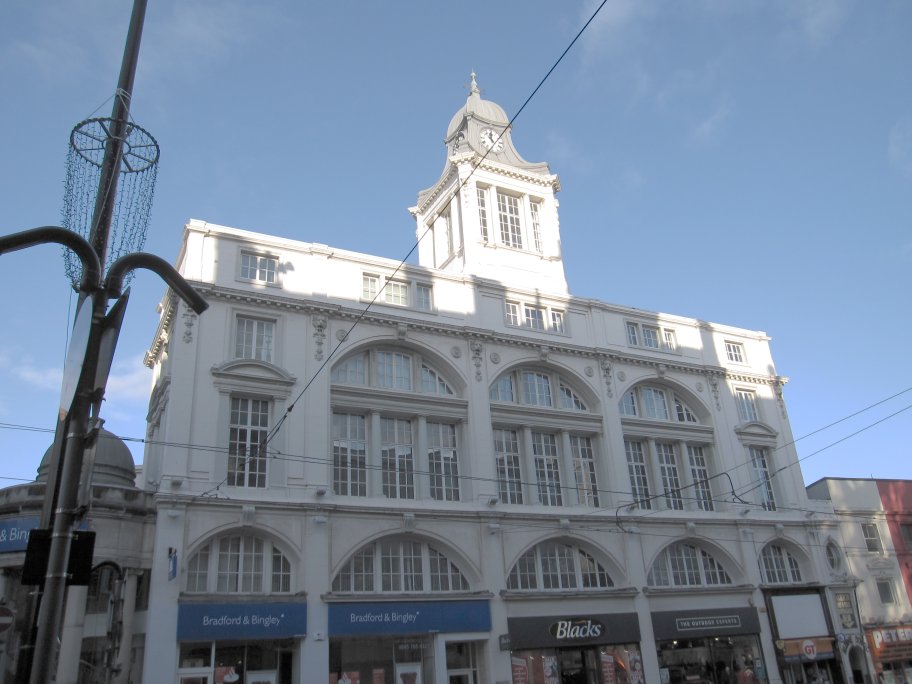
Newspaper reporter at the time of the 1911 census. Served in the King's (Liverpool) Regiment during WWI, being reported as injured in the Times of 22 November 1916.
He was originally employed on the Liverpool Echo, but in 1919, moved to Sheffield, where he worked on the Sheffield Telegraph and Sheffield Independent. The picture on the right shows the Sheffield Telegraph building. In 1931 he moved to Nottingham, working on the Nottingham Evening News, and joined the Nottingham Evening Post as a sub-editor in 1943.
He married Gertrude Lilan Lindley (Lindley pedigree).
When at the Liverpool Echo he wrote under the name "Ryta", The earliest item by him so far traced appeared on 1st January 1914: an account of that day's football match between Liverpool and Bradford City. In 1914 he joined the Army, most likely as a result of Lord Derby's appeal (Stanley, 1919, p4ff.), made at meetings on 28th August, with recruitment on the 31st. Bee's Sports Notes column in the Liverpool Echo for 21st October reported that
Soldiers (regulars, that is) and "Pals" are filling in their spare time by arranging matches, and at Prescot and Hooton each week there are some spirtited games ... My colleague "Ryta," whose notes are missing because he is a hard-working "Pal," tells me in a letter that at Prescot there are any number of sporting folk, and football (both codes) and hockey are the means by which the men forget war for a moment or two.Prescot is on the outskirts of Liverpool. At the end of April 1915, the Brigade moved from Knowsley, adjacent to Prescot and Liverpool, to Grantham for training as a Division (Stanley, 1919, p55). An account from "Ryta" of football played at this time appeared in 14th May 1915. He was listed as a member of a baseball team to play at Stanley Athletic Ground (Bee's Sports Notes, 20th May 1915).
His WWI service record appears to be among those destroyed in WWII, but according to the medal roll cards, he served in France from 7th November 1915. This accords with the account given by Stanley, 1919, p79: "We left our camp at Larkhill on November the 6th, having, as before mentioned, sent forward a small advance party to France." He is next heard of in Bee's Sports Notes on 4th April 1916:
"Ryta" Ill.A note published on the following day says "This day word from the trenches tells that "Ryta" (H. V. Alefounder) is now quite well. Good.".
Readers of the "Echo" will be sorry to hear that Harold V. Alefounder (my assistant "Ryta") is in hospital in France, but is not seriously ill. He has contracted some internal complaint. I am sure I can express to him from all readers our earnest hope that he will soon be well again.
Bee's Notes for 12th April 1916 quoted a letter from "Ryta" about football being played in the evenings. The Brigade was at that time at Chipilly, digging trenches for the 18th Division, and and not at the front line (Stanley, 1919, p114).
On 19th October 1916 he was reported to be in hospital again:
"Ryta" in HospitalThe Brigade was certainly fighting on the front line in October 1916 (Stanley, 1919, p172), and there appears little doubt that this hospital visit was in connection with the aforementioned injury reported in the Times.
I am glad to state that although "Ryta" (Mr. H. V. Alefounder), my assistant, is in hospital at the base he is going on well. We all wish him a speedy recovery.
He served in France for the rest of the war, and was mentioned by Bee in 1918 12th Nov 1918 as a "former assistant."
On 27 April 1974, a letter from him was published in the Liverpool Echo:
Now that Liverpool have again reached the Cup Final, perhaps you will be interested to hear from a member of the team which reported for the Echo and Post the first Final in which Liverpool played 60 years ago.
I was the youngest member of the Echo sports staff. Those who went to the Cup Final were Ernest Edwards (Bee, Sports Editor; Frank Hughes (F.E.H.); Albert Booth and Harold Alefounder.
The match was played on the old Crystal Palace ground in the shadow of the huge glass building.
The ground had very little in the way of stands and the Press Box was behind and to the right of one of the goals, into which the only goal was scored.
I can see that goal now, Bert Freeman having slipped past Ferguson and giving Kenny Campbell no chance.
That was the first Cup Final watched by a Sovereign—King George V—and the last on that ground.
Liverpool's ground was nothing like the palace it now is. If I remember rightly, the dressing room was underground behind the Anfield Road goal and the players used to pop up like rabbits out of a warren.
Jovial Tom Watson was the secretary—no managers then—and a highly popular character.
With best wishes to yourselves and Liverpool's success.
He retired from the Nottingham Evening Post on 29 December 1961.
Usually known as Frederick Charles Alefounder. In 1911 census, a printer's clerk. Was working at Blake & MacKensie, Liverpool before joining the Army on 1 September 1914, as a private on the formation of the 19th Battalion of the King's (Liverpool) Regiment. His address then was 46 Wenlock Road. He served in France, being reported as wounded in the Times of 14 March 1916. Somewhat more serious appears to have been a fairly severe sprain of the left knee with synovitis, a result of being tackled while playing football on 8 May 1917. As men were required to take part in such games as physical exercise, this counted as performance of military duties. He underwent hospital treatment at least twice, being finally discharged on 15th February 1918. He was transferred to the Royal Engineers as a sapper on 1 June 1918, being posted to the Stores section on 25th October. He was transferred to the Reserve on 21st February 1919 "unlikely to become fit". Can be seen in this family group photograph.

Appears on the Clare pedigree. Took over Moor Game farm from his father, but gave up farming there in 1892, as is clear from the sale of stock in that year. The sale did not include the farm itself, which was presumably rented. It may well be that other livestock had already been disposed of – it would hardly have been economic to have just one cow producing milk, a heifer and a horse.
Listed as a Civil Service Clerk in the 1901 census: his work was with the Post Office. He is mentioned in the Times in 1924 and in various reports until 1939 as General Secretary of the Post Office Controlling Officers' Association and in 1931, 1932 and 1938 as representing the Federation of Post Office Supervising Officers. For the latter, he compiled The Supervising Officer's Handbook 1937, and as such is the only Alefounder to have an entry in the British Museum Catalogue of Printed Books.
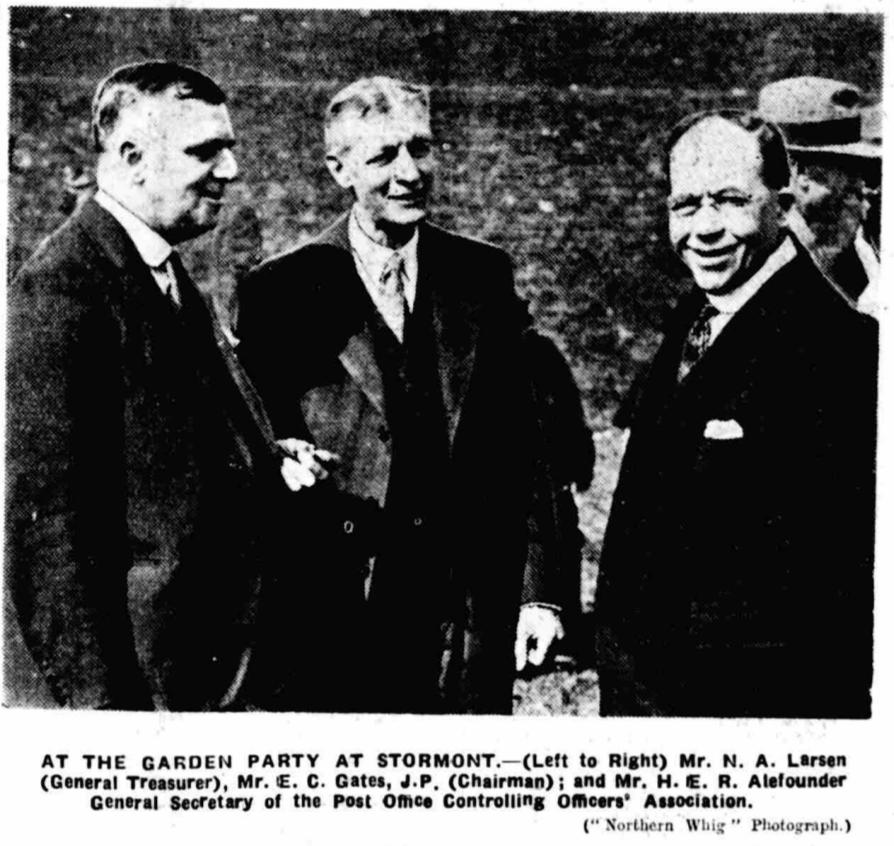
His wife, Maud, stood unsuccessfully in the South Norwood ward, Croydon, in the local elections each year from 1920-1923. According to reports in the Times, she was appointed as a magistrate in Croydon on 14th September 1926 and was chairman of the magistrates in 1937 when Walter Saemann, a German from Nurnberg, was convicted of attempting to defraud the Customs of the duty due on a camera.
Henry Alefounder later became an alderman in Worthing.
He shall prick that annual blister
Marriage with deceased wife's sister
- Iolanthe, W.S. Gilbert
According to the 1881 census, James L. Lightfoot was a refreshment (Coffee) house keeper of Underhill Road, Camberwell, Surrey, employing 1 man and 2 boys. In 1891 he was living at Milton House, Camberwell. His wife is named as Susanna: the ages of the children indicate that she was their mother. James's first wife, his cousin Elizabeth Alefounder, mentioned by her father John in his will (1868), died in 1870. At the time of the 1871 census James was living with her sister, Susanna (listed in the census as his sister) and later that year they were "married". Under the 1835 Marriage Act this would have been illegal and, it seems, by the period in question was a contentious issue. There are many references in The Times from 1849 onwards to attempts to change the law in this respect, all of which were defeated until the Deceased Wife's Sister's Marriage Act was passed in 1907. It is hardly credible to suppose that James and Susanna would have been unaware of what they were doing.
James became a Freeman of the City of London in 1885, at which time he was an oyster merchant of 22 Lime Street. In the 1901 census, after Susanna had died, he appears at 134 Underhill Rd, Camberwell, as a refreshment house keeper.
He, his wife and five of their children are buried in the same grave at Camberwell Old Cemetery. Their son James Love, buried at Ealing, is also mentioned on the stone.
Born in Coombmartin, Devon. Joined the merchant navy at age 14 and obtained his Certificate of Service as a Mate in 1850, under the Mercantile Marine Act of that year. His service record at that time was as follows:
| Vessel's Name | Port belonging to | Tons | Capacity, whether Apprentice, Seaman or Mate | In what Trade | Date of Service | |
|---|---|---|---|---|---|---|
| From | To | |||||
| William Smith | Ilfracombe | 55 | Apprentice | Coasting | 10 April 1823 | 10 April 1827 |
| Different Ships | Different Ports | Different tonage | Seaman | Different trades | 10 April 1827 | September 1832 at sea all the time |
| Pilot | Bristol | 300 | Second Mate | Dalasia | September 1832 | May 1834 |
| Ajax | Bristol | 300 | Sea man | East Indies | June 1834 | May 1835 |
| William Henry | Bristol | 150 | Mate | Coasting | May 1835 | September 1836 |
| Feliza | Bristol | 350 | Mate | West Indies | September 1836 | August 1840 |
| Eliza | Bristol | 300 | Mate | N. America? | August 1840 | May 1842 |
| Margarat | Bristol | 176 | Mate | Jehaboe | June 1842 | September 1844 |
| Clydeside | Bristol | 280 | Mate | Patagonia | October 1844 | June 1846 |
| Woodpecker | Bristol | 270 | Mate | West Indies | June 1846 | July 1848 |
| Monmouth | Bristol | 210 | Mate | Cuba | July 1848 | August 1849 |
| Urgent | Bristol | 276 | Mate | Cuba | August 1849 | Present Date [3 Dec 1850] |
He passed the relevant examination and obtained his mariners' Master Ordinary certificate (number 11580) at Liverpool in 1854. For this, he had to give testimonial certificates and a statement of service:
| No. of Testimonial | Ship's Name | Port belonging to | Rank | date of service | time served | |||
|---|---|---|---|---|---|---|---|---|
| From | To | Years | Months | Weeks | ||||
| 1 | Pilot | Bristol | 2d Mate | Aug 1837 | Feb 1838 | 0 | 6 | 0 |
| " | Feliza | do | do & Mate | Feb 1838 | Jun 1841 | 3 | 4 | 0 |
| 2 | Eliza | do | Mate | June 1841 | Dec 1843 | 2 | 6 | 0 |
| 3 | Margaret | Liverpool | do | Dec 1843 | July 1845 | 1 | 5 | 0 |
| 4 | Woodpecker | Bristol | do | Jan 1848 | Jan 1851 | 3 | 0 | 0 |
| " | Urgent | do | do | |||||
| 5 | Ailsa | Bridgewater | do | March 1851 | Sep 1851 | 0 | 6 | 0 |
| 6 | Edward | Liverpool | do | Oct 1852 | Jan 1853 | 1 | 4 | 0 |
| 7 | Manilla | Liverpool | do | March 1854 | Dec 1854 | 0 | 8 | 0 |
He thus claimed for 13 years 3 months at sea, for which he had certificates, and also claimed a further 19 years and 1 month with no certificates, total 32 years 4 months. His Certificate of Competency as Master was granted on 30 December 1854.
According to Lloyds Captains Register, 1869, he then served on the following ships:
| Ship | number | position | dates | voyages | notes |
|---|---|---|---|---|---|
| Frederick | Mate | 1855 | Aust | lost Oct 13, 1855 | |
| Wm. Gibson | Mate | 1855-6 | E.I. | ||
| Water Witch | 24295 | Mate | 1856-8 | S.A. | |
| James Hull | 21683 | Mate | 1859-60 | S.A. | |
| Antilla | 7034 | Mate | 1860 | S.A., U.S. | |
| Hawthorne | 27408 | Master | 1861 | W.I. | |
| Mary Block | 19086 | Master | 1861-2 | S.A. | |
| Favourite | 27404 | Master | 1862 | S.A. | |
| Sea Nymph | 5783 | Mate | 1863 | F.P.S. | |
| Druid | 10518 | Mate | 1863-4 | W.I., S.A. | lost Nov 14, 1864 |
| Ullswater | 47596 | Mate | 1865-7 | S.A. | |
| Persia | 41559 | Mate | 1867 | S.A. |
| Voyages: | |
| Aust. | Australia, Tasmania, New Zealand |
| E.I. | East Indies, Birmah, Mauritius, Red Sea |
| F.P.S. | France south of Brest, Portugal, Spain outside Straits of Gibraltar, Azores |
| S.A. | Brazils, River Plate |
| U.S. | America North, United States (Atlantic and Gulf Ports) |
| W.I. | West Indies, Vera Cruz, Belize and Caribbean Sea |
For part of his time as mate on Water Witch, his nephew, Robert Redcliff Drust (below) was second mate. Richard Brooks had died by the time of the 1871 census; his wife is listed as a widow of 90 Burlington Street, Liverpool.
Dines pedigree. Born in Bristol to Jane Drust (née Dines), a sister of Usselia Dines, wife of Richard Brooks, above. He was also a mariner, obtaining his Certificate of Competency as a Second Mate on 20 May 1857. At that time, his address was 161 Burlington Street, Liverpool. His service record was:
| No. of Testimonial | Ship's Name | Port belonging to | Rank | date of service | time served | |||
|---|---|---|---|---|---|---|---|---|
| From | To | Years | Months | Days | ||||
| 1 | Queen | Whitehaven | boy | Dec 1852 | Oct 1853 | 9 | ||
| " | Whitehaven | Whitehaven | boy | Oct 1853 | Dec 1854 | 1 | 3 | |
| 2 | Mary Wood | Liverpool | Apprentice | Jan 1, 1855 | May 15 1857 | 2 | 4 | 15 |
He was living as 10 Parron Street, Liverpool when, on 17 January 1862, he was awarded a Certificate of Competency as a First Mate, submitting the following service record:
| No. of Testimonial | Ship's Name | Official Number | Port belonging to | Rank | date of service | time served | |||
|---|---|---|---|---|---|---|---|---|---|
| From | To | Years | Months | Days | |||||
| 1 | Water Witch | 24295 | Liverpool | Second Mate | Nov 18, 1857 | Dec 6, 1858 | 1 | 0 | 19 |
| 2 | Success | 2341 | Do. | Do. | March 10 1859 | Aug 1, 1859 | - | 4 | 21 |
| 3 | Do | " | Do. | Do. | Sep 2 1859 | March 27 1860 | - | 6 | 25 |
| 4 | W W Smith | 14685 | Do. | Do. | July 1, 1860 | March 24, 1861 | 1 | 0 | 19 |
| 5 | Nelson | 16178 | Fleetwood | Boatswain | May 4, 1861 | July 23 1861 | - | 4 | 21 |
| 6 | Do | 16178 | Do. | Do. | Aug 26, 1861 | Dec 26, 1861 | - | 6 | 25 |
On 1st May 1867, when living at 71 Beaufort Street, Liverpool, he obtained his Certificate of Competency as an Ordinary Master, submitting this service record:
| Ship's Name | Port of Registry and Official No | Service of Applicant | |||||
|---|---|---|---|---|---|---|---|
| Rank | Date of Commencement | Date of Termination | Time in each Ship | ||||
| Years | Months | Days | |||||
| Scutari | London 15846 | M | 25 July 1864 | 6 Feb 1865 | 6 | 11 | |
| Lord Dufferin | Lpool 8072 | M | 22 Mar [1865] | 27 Oct 1865 | 7 | 5 | |
| Nithsdale | Dunfries 16922 | M | 21 Apl 1866 | 26 Mar 1867 | 11 | 5 | |
He married Frances Lancaster on 17 August 1859, his surname being entered incorrectly in the register (and consequently in the GRO record) as Hurst. His signature, although somewhat faint, is clear enough.
A notice was published in the Liverpool Mercury on 6th March 1868, in the Deaths section:
Drust—Dec. 30, at Valparaiso, in his 28th year, Mr. Robert Redcliffe Drust, late master of the barque Energy, only child of Mr. William Drust, 104 Beaufort-street.His widow married another mariner, Thomas Henry Wood, on 26 September 1868: no further record of either of them has been found. A daughter from his first marriage, Elizabeth Jane Drust, was with her Drust grandparents at the time of the 1871 census.
Lindley pedigree. Barrister and M.P. The Times published short biographies of candidates for the 1892 election, the one for Robert Purvis appearing on 29th June:
PURVIS, ROBERT (Peterborough) (U.L.), of 11, King's Bench-walk, Temple, b. 1844, educated at Marlborough School and Downing College, Cambridge (B.A. 1870, M.A. and LL.M. 1875, LL.D. 1881), and called to the Bar at the Inner Temple 1873, joining the North-Eastern Circuit. M., 1874, Elizabeth Marion, eld. d. of Mr. W. H. Peat, merchant, of Mincing-lane. Unsuccessful candidate (L.), Abingdon division Berkshire 1885, South Edinburgh (U.L.) 1886, and Peterborough 1889.He did not win that election, but was Member of Parliament (U.) for Peterborough 1895-1906, standing again (unsuccessfully) in 1910.
He was knighted in 1905.
The picture on the right was used for his wikipedia page, and more pictures are held by the National Portrait Gallery.
After his death on 23rd June 1920, probate of his Will was granted to Frederica Kenyon-Stow, a niece of his late wife. Effects were £649 7s. 3d. He was buried in his late wife's family vault in the Extra Mural Cemetery, Brighton, Sussex.

On the left, Martha Ralston née Purvis, in Sheffield. The clothing style is of the 1860s.
On the right, Martha Ralston née Purvis (sitting), and her daughter Liney Lindley née Ralston (standing), in about 1880.
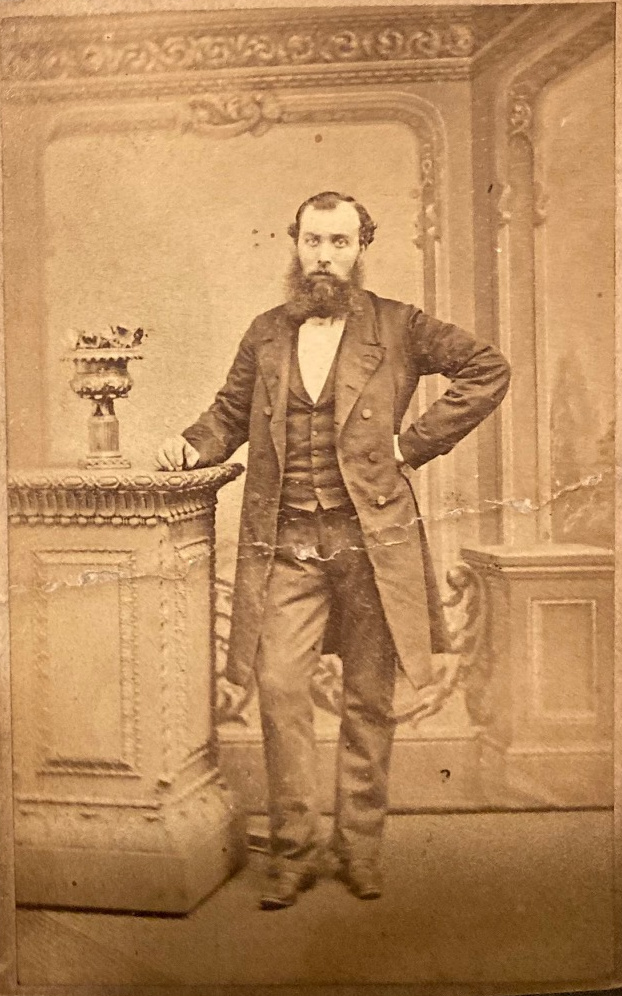
No birth or baptism record has been found as yet. On marriage, he gave his fathers name as John and in English census returns, his birthplace as Scotland. On this basis, he was identified in the 1851 census of Scotland.
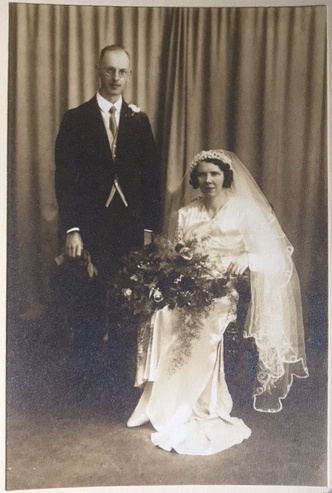
Frank Ward and (Estelle) Madge Lindley, wedding photograph, Sheffield 1939
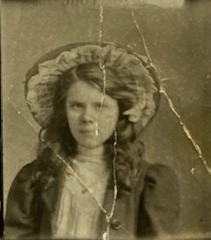 Photo from Nancy Keldsen |
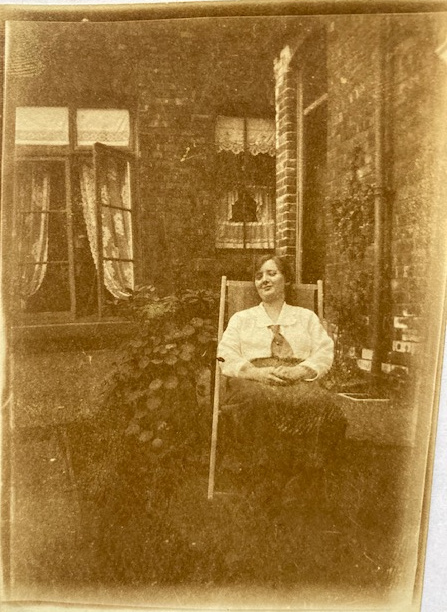 Photo from Nancy Keldsen |


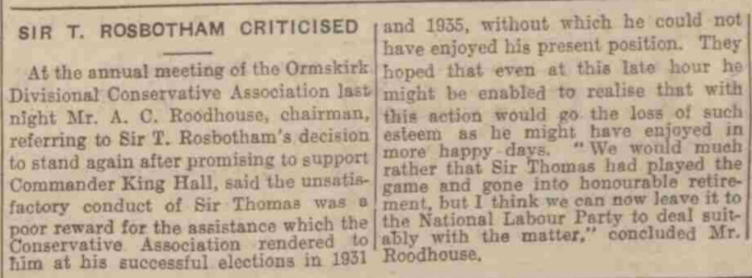
Clare pedigree. Farmer of Bickerstaffe, Lancashire, who became a respected Member of Parliament for Ormskirk, initially (in 1929) in the Labour party, and then joining the National Labour group, standing successfully against the Labour candidate in 1931 and 1935, with, it appears, the help of the local Conservative Association. He was knighted in 1933 for political and public services. Following the announcement of this in the New Year's honours list, a item giving biographical details appeared in the Lancashire Daily Post (right). The knighthood was conferred by the King on 23 February at Buckingham Palace.
The picture on the left is from a newspaper article that appeared after he decided to stand down from Parliament following a period of illness. He had made such a decision before, but then withdrew it, prompting a complaint from the Conservatives (second item on the right). It appears that he wished his successor to have the support of local farmers.
The final newspaper item (right) concerns his second marriage in 1946, to Miss Joan Dearden.
Lancashire Evening Post 24 Apr 1946. Click to enlarge. Image from the British Newspaper Archive, in partnership with the British Library Board, © Johnson Press plc.Acording to a report in the Nottinghamshire Guardian for 12 March 1898, Mr Edward Lindley, colliery manager of the Grange, Greasley, was re-elected (unopposed) to Nottinghamshire County Council, representing Eastwood.
Lindley pedigree. Gravestone of Eli Thomas Lindley and his first wife Elizabeth Gascoyne Granger.
Lindley pedigree. Son of the above Eli Thomas. On the left, gravestone of Eli Thomas Lindley and his first wife, Doris H Littlewood. On the right, in 1955 with his second wife, also known as Doris.

Lindley pedigree. Shown in the 1901 census working as a clerk, living with his parents. Ship's records show that on 5 April 1907 he was engaged as a waiter, to start on 8 April, on the Carmania at Liverpool, having previously worked on the Olenda. His address was given as 201 London Road. He was discharged on 2 May at Liverpool, with pay of £3 6s 3d. He signed on again the following day, to start on 6 May, and was discharged on 29 May with pay of £3 1s 3d, signed on again 31 May to start on 3 June, discharged 26 June with pay of £3 3s 5d. His next engagement, again as a waiter, was on the Saxonia, where he signed an agreement on 16 August to start on 19 August. He deserted in Boston (USA) on 3 September, without any pay.
The next set of records concern his service in WWI, which was with the Canadian Over Seas Expeditionary Force. He attested on 10 January 1916, claiming to have previously served for 3 years with the "1st W. York R.E. Eng.". According to en.wikipedia.org/wiki/Somme_Barracks, the 1st West York Engineer Volunteers used barracks in Glossop Road, Sheffield from 1882 until 1908, when all volunteer forces became part of the new Territorial Army. I have not found any record of his service with this unit, but records currently available for searching on-line concentrate on periods of war, and it is possible that they might not include the period between the end of the Boer war and the start of WWI.
He named his mother as next of kin, and on 1 August 1916 assigned CAN$20 per month from his pay to be sent to her in Sheffield. On 7 August he embarked on the S.S. Cameronia and arrived in Liverpool on 18 August. On 9 March 1917 as a private in the 124th battalion of "C" company, he proceeded for overseas service from Witloy Camp and disembarked at Boulogne on 11 March. He was diagnosed with appendicitis on 21 Novenber 1917 and was evacuated to hospital at Auberque. Complications ensued, an appendicular fistula, and he was sent to the Canadian War Hospital at Exeter and then to a convalescent hospital at Monks Heaton, being eventually discharged at the end of March 1918.
He was transferred to the Labour Battalion at Shorncliffe, and then to Sunningdale, and eventually to France on 14 September 1918. Promotions to Lance Corporal and then Corporal (end of 1918) followed. He returned to Sunningdale on 7 April 1919, was sent to Camp Rhyl on 5 May, embarked on HMT Northland at Liverpool on 13 May and disembarked at Halifax, Canada, on 23 May. He was demobilised at Vancouver on 29 May 1919.
According to USA census records, he immigrated there in 1919 and became a restaurant proprietor, then a table maker and finally a nurseryman in Erroll Heights, just outside Portland, Oregon. He was a patient in Emmanuel Hospital in Portland. Account differ as to the reason, either recovering from war wounds or because of appendicitis. That was where he met a nurse, Pauline Anderson. They married in 1922. They had 4 children, including a son, William Ralston Lindley.
Lindley pedigree. William Ralston Lindley initially learnt printing and worked as a proofreader and night editor on the Eugene Register-Guard, then qualified in higher education and lectured at various universities. He wrote a book (published in 1994) about growing up in Oregon, "Hard Times, Good Times in Oregon: Recollections of the 1930s."
According to census returns, born in Horncastle, Lincolnshire in about 1822, but he was living in Liverpool by the time of his marriage in 1845. In the 1851 census, he appears in the same house (but in a separate household) as Absalom Stephenson, a tailor of an earlier generation born in Horncastle. Absalom Stephenson was a witness to Charles's marriage, and was no doubt a relative. He can be found, with his family, in the 1841 census, living at 14 Prospect Street, Liverpool, but I have not located Charles in 1841.
Charles's wife, Elizabeth, is shown in 1851 and 1861 as having being born about 1824-5 in Liverpool. However, in 1871 and 1881, this becomes 1832 and Shrewsbury. It is this that leads me to believe that Charles married twice, both wives being called Elizabeth. The only record I can find that matches the second marriage is for an Elizabeth Armstrong, but until I have examined the parish register, I cannot be certain that this is the correct one.
His address at various times and other details can be found in parish registers and census returns:
| 1845 | marriage | tailor of Basnett Street |
| 1846 | bp of son | tailor of Fleet Street |
| 1851 | census | Master Tailor of 16 Basnett Street |
| 1860 | bp of son | tailor of Radcliffe Street |
| 1861 | census | Tailor employing 3 men, of 23 Falkland Street |
| 1862, 1863 | bp of daughters | tailor of Falkland Street |
| 1867 | bp of daughter | tailor of Everton |
| 1871 | census | Master Tailor employing 10 men, of 16 Rockwood Street |
| 1881 | census | Tailor & Draper of 110 Shaw Street, Everton |
| 1891 | census | Living on own means, with daughter Elizabeth and son-in-law Thomas Reay at 29 Mount Street, Liverpool. |
He died in 1897 aged 76.
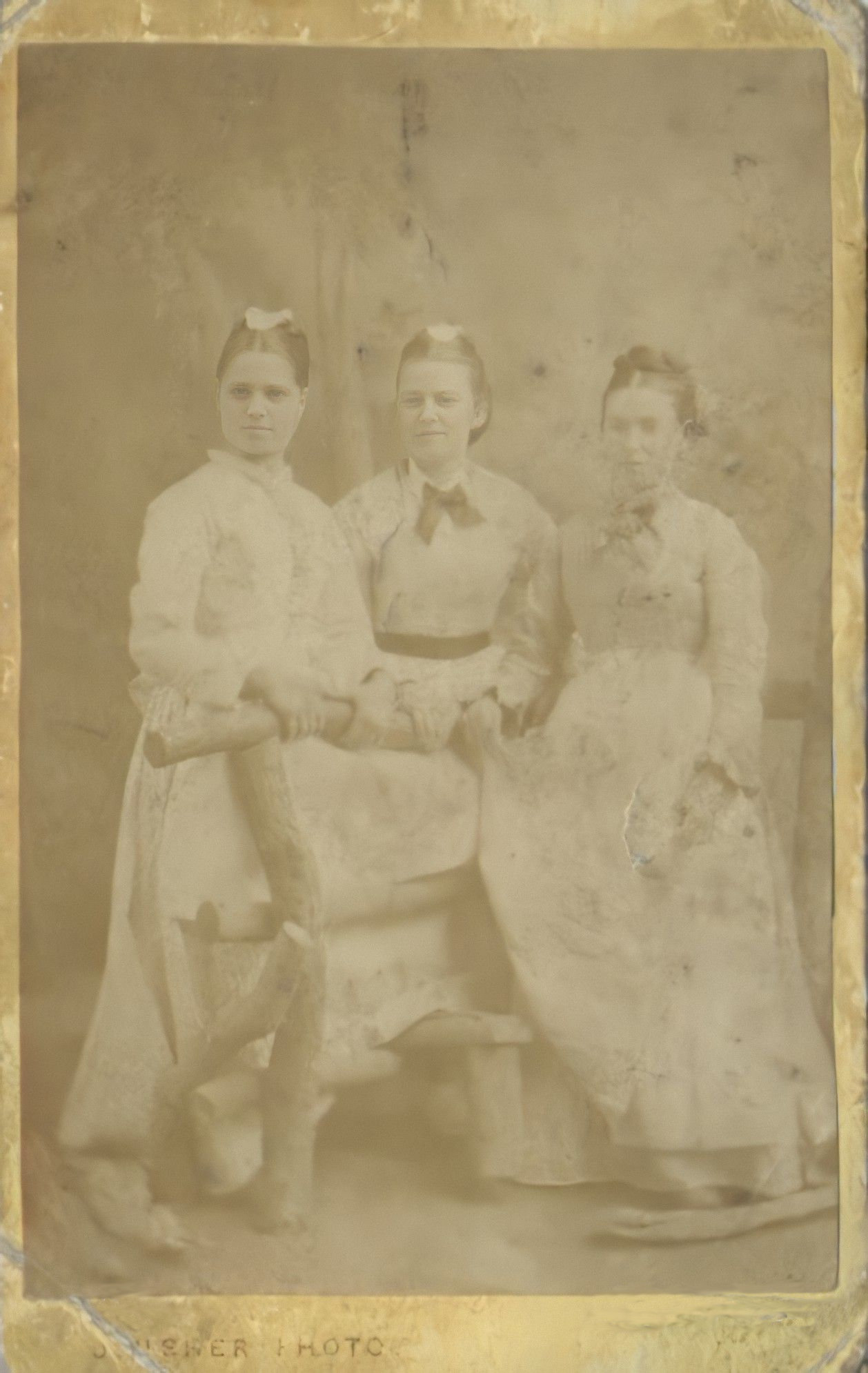
Fanny Farley on the left with two of her sisters.

Back row, standing: (William) Harry Crowther, John Henry Crowther, Albert Edwin Crowther, front row, seated: Beryl Crowther and Esther Jane Crowther (née Mercer). Photograph taken September 1917.
![]()
My thanks to Peter James for information concerning Daniel Alefounder, his wife and children, to the late John Lightfoot and particularly to Nick Lightfoot and Stephen Kingsnorth for information on, respectively, the Lightfoot and Kingsnorth parts of the pedigree.
![]()
 |
Last updated 12th December 2024 by Peter Alefounder |
 |